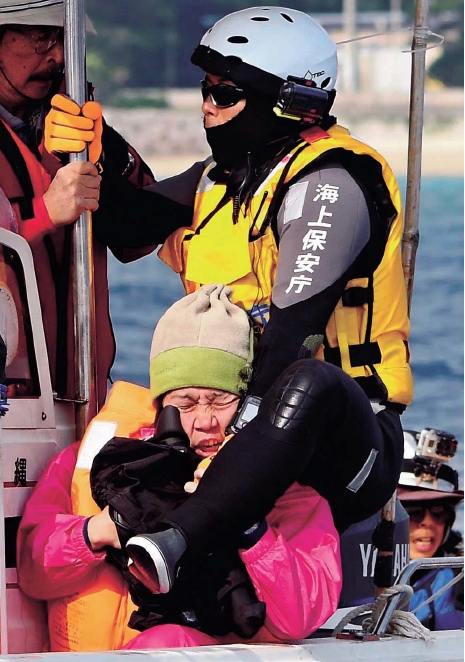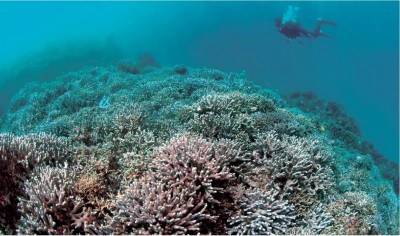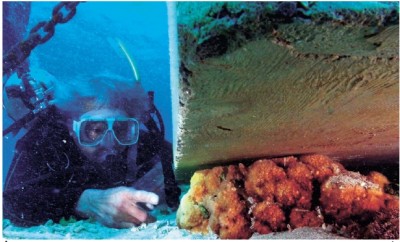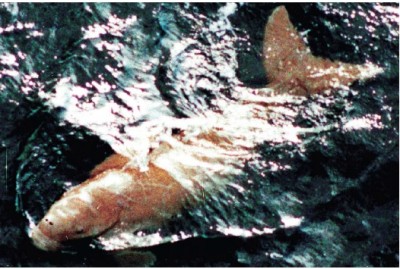Respect the will of the people; cancel the Henoko relocation

A coast guard officer mounts a female film director’s shoulder in Oura Bay, where preparation work for construction of a new U.S. base was being carried out on January 20. Excessive security measures by Japan Coast Guard officers are attracting strong criticism from people.
Governor Onaga and Ambassador Kennedy to meet
On June 19, in Tokyo, Governor Takeshi Onaga will meet with U.S. Ambassador Kennedy for the first time.
The Governor will convey to the ambassador the will of the majority of Okinawan people, which is to refuse construction of a new U.S. base at Henoko, Nago, where the governments of Japan and the United States plan to move U.S. Marine Corps Air Station Futenma from Ginowan. Onaga will ask the ambassador to review the relocation plan.

A Porites community spreading like a forest in Oura Bay was photographed in April 2013. According to documents relating to the environmental impact assessment issued by Okinawa Defense Bureau in April 2009, a massive community of the coral was found there, stretching about 100 meters in length.
The Ryukyu Shimpo presents a special photo series on what has been happening in the sea of Henoko. The Japan Coast Guard officers have been forcefully removing citizens protesting against the construction of the new base on Oura Bay, where there are world-class reefs and dugongs. It is an absurdity to build the new U.S. base against the will of the people, because the United States is the leader of and biggest advocate for democracy in the world.
(English version translated and edited by T&CT and Jane Close)

In February 2015, coral was crushed by concrete blocks installed for a seabed boring survey in Oura Bay. Some concrete blocks have damaged coral that lies beyond the area approved for land reclamation by the Okinawa Prefectural Government.

A dugong was confirmed to be living in Oura Bay in 2001. The Dugong was designated a national natural monument in 1972. It is designated as one of the most endangered class IA species on the mammalian Red List of the Ministry of the Environment.
Previous Article:Onaga-Kennedy Meeting: We Call for Unconditional Closure of Futenma–Don’t Treat Okinawa as a Colony
Next Article:Okinawa City to market itself as cosmopolitan
[Similar Articles]
- Nago Mayor asks US Ambassador Kennedy to cancel relocation of Futenma base to Henoko
- Governor Onaga says “The new base is discrimination,” and “America is responsible” in appeal to US Ambassador
- Okinawa governor asks new U.S. ambassador to reduce base burden on Okinawa
- Oceanographer claims Oura Bay is a world treasure
- Governor Onaga to visit to US at end of January, making appeal to incoming administration for Henoko issue
 Webcam(Kokusai Street)
Webcam(Kokusai Street)


